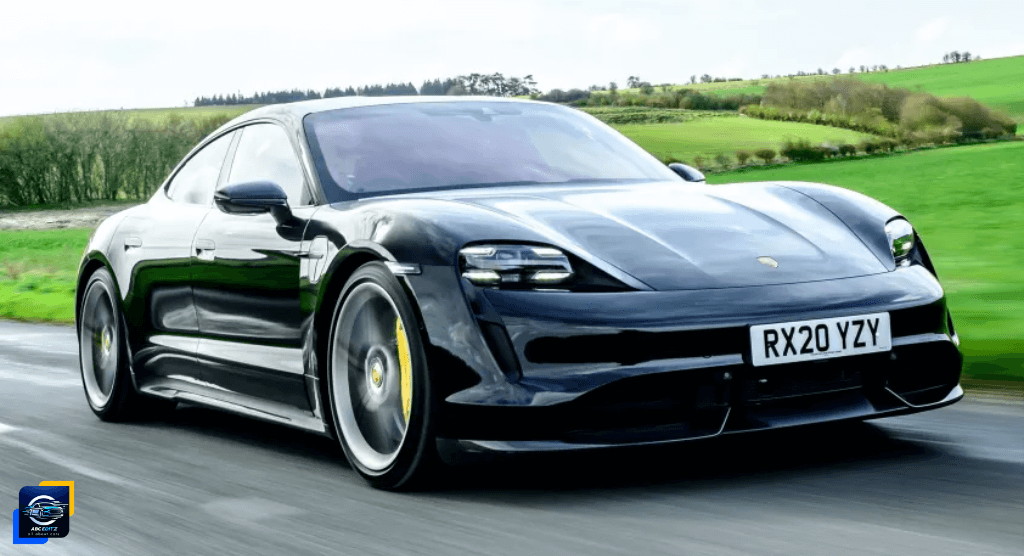
| Porche Taycan Model | Range | Wallbox charge time | Rapid charge time |
| Taycan (71kWh) | 231-276 miles | 11hrs 30mins (0-100%, 7.4kW) | 21mins (10-80%, 225kW) |
| Taycan (84kWh) | 268-314 miles | 13hrs 30mins (0-100%, 7.4kW) | 19mins (10-80%, 270kW) |
| Taycan 4S (71kWh) | 230-282 miles | 11hrs 30mins (0-100%, 7.4kW) | 21mins (10-80%, 225kW) |
| Taycan 4S (84kWh) | 267-318 miles | 13hrs 30mins (0-100%, 7.4kW) | 19mins (10-80%, 270kW) |
| Taycan GTS (84kWh) | 273-313 miles | 13hrs 30mins (0-100%, 7.4kW) | 19mins (10-80%, 270kW) |
| Taycan Turbo (84kWh) | 270-315 miles | 13hrs 30mins (0-100%, 7.4kW) | 19mins (10-80%, 270kW) |
| Taycan Turbo S (84kWh) | 273-291 miles | 13hrs 30mins (0-100%, 7.4kW) | 19mins (10-80%, 270kW) |
Porsche Taycan Final Words
If you identify as a ‘petrolhead’ but are contemplating a shift to an electric vehicle while prioritizing nimble handling above all else, then the Porsche Taycan emerges as the ideal choice. Although it comes with a hefty price tag, few electric vehicles can rival the Taycan in terms of driving enjoyment.
The interior of the Taycan is equally impressive, and thanks to Porsche’s ongoing software updates, the range has been steadily improving year after year. Taking everything into account, the Porsche Taycan represents a significant milestone for electric cars, demonstrating that high-performance purist vehicles have a promising future – and are already thriving – in the era of battery power.
Also Check – Top 10 best electric sports cars 2024
Porche Taycan Range details, specs and alternatives
Porsche took the plunge into true electric driver’s cars in 2019 with the launch of the Taycan, its inaugural electric vehicle. Positioned as a four-door sports saloon to compete with the Tesla Model S, the Taycan marked Porsche’s entry into the electric car arena. The brand from Stuttgart is now actively developing a range of electric cars, including emissions-free replacements for its Boxster and Cayman sports cars, as well as the Macan SUV.
In terms of size, the Taycan aligns closely with the Porsche Panamera. However, it sacrifices some practicality compared to its more traditional saloon counterpart, owing in part to its coupe-like appearance and the absence of a hatchback tailgate. For those seeking enhanced practicality, the Taycan lineup has expanded to include two estates: the Taycan Sport Turismo and the slightly more rugged Cross Turismo, both of which have been reviewed separately.
Utilizing the same EV-specific foundation as the Audi e-tron GT, the Taycan offers several variants. The entry-level rear-wheel-drive Taycan and the mid-range four-wheel-drive Taycan 4S provide options of 71kWh or 84kWh (usable) batteries, boasting claimed maximum ranges ranging from approximately 270 to 320 miles, depending on the specific configuration.
The GTS, Turbo, and Turbo S models come standard with an 84kWh battery and four-wheel drive, offering up to 751bhp and maximum ranges of around 300 miles, thanks to software updates implemented by Porsche over the years. Opting for any model with the larger batteries also increases the Taycan’s maximum charging speed to 270kW.
With a starting price just under £80,000, the base Taycan includes features such as 18-way power-adjustable sports seats, LED lights, two-zone climate control, and the Porsche Communication Management (PCM) system with online sat nav. However, options can quickly escalate the cost, with even the most basic models lacking amenities like heated seats, power-folding mirrors, or adaptive cruise control. The Turbo and Turbo S, although more generously equipped, may still require substantial customization.
Our preferred choice in the lineup is the entry-level Taycan with the larger 84kWh ‘Performance Battery Plus’. This model delivers the complete Porsche sports car experience with 400bhp, more than sufficient for road use, and comes at a considerably lower cost compared to the range-topping models. For those desiring more power or four-wheel-drive capability for winter conditions, the mid-range Taycan 4S is also a commendable option.
